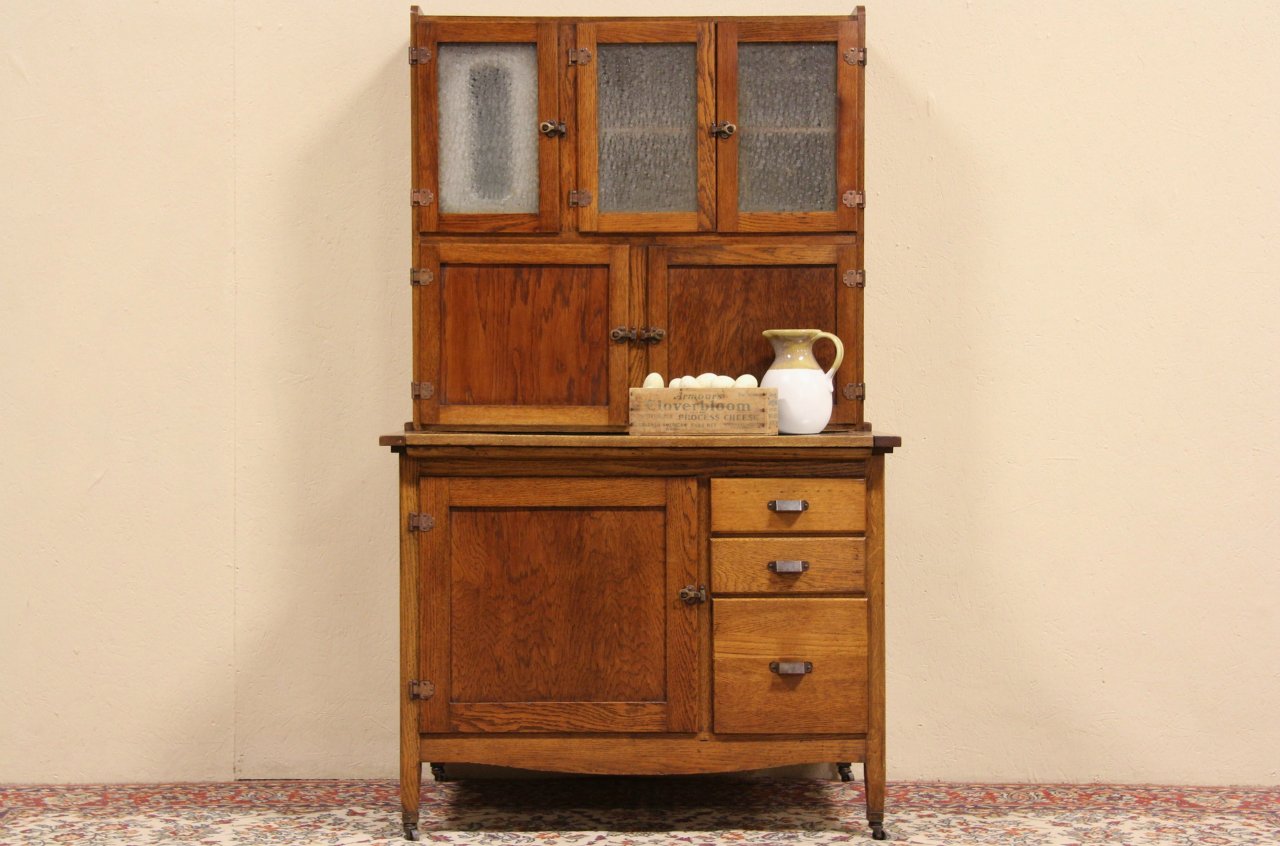Hoosier cabinets are iconic pieces of vintage furniture that gained popularity in the early 20th century. They were known for their innovative design and functionality, featuring storage compartments, work surfaces, and various organizational features. However, with the rise in demand for Hoosier cabinets, there has also been an increase in replicas and imitations. In this essay, we will explore the key factors to consider when identifying authentic Hoosier cabinets, including design features, materials, construction techniques, manufacturer markings, provenance, wear, and patina.
Design Features
One of the primary ways to identify an authentic Hoosier cabinet is by examining its design features. Hoosier cabinets typically have a distinctive layout, consisting of a lower section with storage compartments, drawers, and shelves, and an upper section with a large flour sifter, spice rack, and additional storage space. The upper section often features glass doors for displaying items, while the lower section may have sliding or hinged doors. These specific design elements are strong indicators of an authentic Hoosier cabinet.
Materials
Authentic Hoosier cabinets were crafted from solid wood, such as oak, cherry, or maple. The use of high-quality wood not only ensured durability but also enhanced the cabinet’s aesthetic appeal. When examining a Hoosier cabinet, look for visible grain patterns and joints that are dovetailed or mortise-and-tenon, indicating solid wood construction. Replicas or imitations may utilize lower-quality materials such as plywood or particleboard, compromising the authenticity and overall quality of the piece.
Construction Techniques
In addition to the materials used, the construction techniques employed in creating Hoosier cabinets can provide valuable insights into their authenticity. Authentic Hoosier cabinets were typically constructed using traditional carpentry methods, such as dovetailing, mortise-and-tenon joints, and tongue-and-groove techniques. These techniques create strong and durable joints that withstand the test of time. Conversely, replicas or imitations may rely on modern construction methods, such as nails, screws, or staples, which can indicate a lack of authenticity.
Manufacturer Markings
Many reputable companies produced Hoosier cabinets during the early 20th century, including the Hoosier Manufacturing Company, Sellers Cabinet Company, and McDougall Kitchen Cabinet Company. These manufacturers often marked their products with labels or stamps indicating the brand, model, and sometimes the manufacturing location. Researching and comparing these manufacturer markings against known authentic examples can help verify the cabinet’s authenticity.
Provenance and History
The provenance and history of a Hoosier cabinet can also provide valuable information. Authentic Hoosier cabinets were primarily produced between the late 19th century and the 1930s. Cabinets claiming to be Hoosier-style but manufactured outside of this time frame are likely reproductions. Additionally, researching the cabinet’s history and previous owners can help trace its origins and authenticity. Look for documentation, photographs, or testimonials that provide evidence of the cabinet’s age and authenticity.
Wear and Patina
Examining the wear and patina of a Hoosier cabinet can offer additional clues about its authenticity. Authentic vintage cabinets often exhibit signs of age, wear, and usage, which can add to their charm and value. Look for natural wear patterns on the surface, such as scratches, dents, or a faded finish. These signs of aging are challenging to replicate accurately and are typically absent in reproductions or imitations. Additionally, authentic Hoosier cabinets may develop a distinct patina over time, resulting from aging and exposure to light and air. Replicas often lack this aged patina, suggesting they are not authentic.
Dimensions and Measurements
Another aspect to consider when identifying authentic Hoosier cabinets is their dimensions and measurements. Authentic Hoosier cabinets followed specific standard dimensions, although there could be variations. Knowing the typical height, width, and depth of a Hoosier cabinet can help determine whether a piece aligns with these dimensions. Deviations from the standard measurements may indicate a reproduction or a modified cabinet.
Documentation and Expert Opinion
Obtaining documentation and seeking expert opinion are crucial steps in the identification process. If a Hoosier cabinet comes with any accompanying documentation, such as receipts, photographs, or letters of authenticity, thoroughly examine them to verify their legitimacy. Additionally, consulting with experts or professionals in the field of vintage furniture can provide valuable insights. These individuals possess extensive knowledge and experience in identifying and appraising authentic pieces. They can closely examine the cabinet and provide an expert opinion on its authenticity based on various factors.
Conclusion
Identifying authentic Hoosier cabinets can be a challenging task, given the prevalence of replicas and imitations in the market. However, by considering key factors such as design features, materials and construction, manufacturer markings, provenance, wear and patina, and consulting expert opinion, one can increase their chances of acquiring an authentic Hoosier cabinet. Remember that thorough research, attention to detail, and a discerning eye are crucial when investing in vintage furniture. By following these guidelines, you can confidently identify and appreciate the beauty and historical significance of an authentic Hoosier cabinet.


